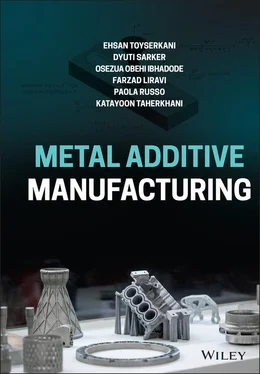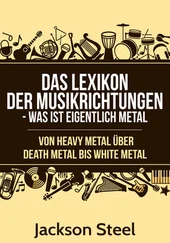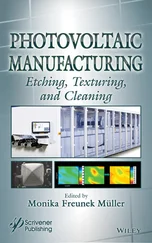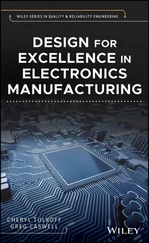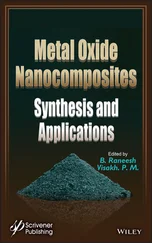Ehsan Toyserkani - Metal Additive Manufacturing
Здесь есть возможность читать онлайн «Ehsan Toyserkani - Metal Additive Manufacturing» — ознакомительный отрывок электронной книги совершенно бесплатно, а после прочтения отрывка купить полную версию. В некоторых случаях можно слушать аудио, скачать через торрент в формате fb2 и присутствует краткое содержание. Жанр: unrecognised, на английском языке. Описание произведения, (предисловие) а так же отзывы посетителей доступны на портале библиотеки ЛибКат.
- Название:Metal Additive Manufacturing
- Автор:
- Жанр:
- Год:неизвестен
- ISBN:нет данных
- Рейтинг книги:5 / 5. Голосов: 1
-
Избранное:Добавить в избранное
- Отзывы:
-
Ваша оценка:
- 100
- 1
- 2
- 3
- 4
- 5
Metal Additive Manufacturing: краткое содержание, описание и аннотация
Предлагаем к чтению аннотацию, описание, краткое содержание или предисловие (зависит от того, что написал сам автор книги «Metal Additive Manufacturing»). Если вы не нашли необходимую информацию о книге — напишите в комментариях, мы постараемся отыскать её.
A comprehensive review of additive manufacturing processes for metallic structures Metal Additive Manufacturing
Metal Additive Manufacturing
Metal Additive Manufacturing — читать онлайн ознакомительный отрывок
Ниже представлен текст книги, разбитый по страницам. Система сохранения места последней прочитанной страницы, позволяет с удобством читать онлайн бесплатно книгу «Metal Additive Manufacturing», без необходимости каждый раз заново искать на чём Вы остановились. Поставьте закладку, и сможете в любой момент перейти на страницу, на которой закончили чтение.
Интервал:
Закладка:
The development of this book was motivated by our desire to provide foundational material for a core undergraduate course in Mechanical and Manufacturing Engineering, and we envision its use in graduate courses as well. Universities globally are revising their curriculum to incorporate AM‐related courses. This textbook may provide an introductory platform to be adopted in such courses to promote an appreciation for and grasp of AM among both undergraduate and graduate students. This book may also fill a gap for engineers working outside academia who want to appreciate AM processes by identifying links between traditional core physics and engineering concepts courses and AM. The book provides a step‐by‐step understanding of metal AM and a solid foundation of the topic for readers, who will subsequently be well equipped to explore AM research in greater depth.
For a broad range of readers, this book sheds light on various key metal AM technologies, focusing on basic physics and modeling. This textbook is not a literature survey, nor is it intended for readers with no engineering background. In contrast, it is an introduction to basic physical concepts and phenomena of metal AM processes and their applications. Relevant foundational concepts, such as energy deposition, powder bed fusion, and binder jetting processes, are explained in‐depth and illustrated by case studies throughout the book. Additionally, two emerging processes for metal AM: material extrusion and material jetting, are described. Basic design for AM (DfAM) and quality assurance principles are also covered.
We would like to express our sincere gratitude to several people who helped in the preparation of this book. Special thanks to Francis Dibia, Ali Keshavarzkermani, Zhidong Zhang, Yuze Huang, Mazyar Ansari, Andrew Barlow, Misha Karpinska, Donovan Kwong, and Eniife Elebute, who helped us with some materials and produced some of the figures, as attributed in the book. In addition, we acknowledge all organizations, publishers, authors, and companies that permitted use of their figures, plots, and texts; they have been cited accordingly throughout the book. Last but not least, thanks to our families, who make it all worthwhile.
Like any first edition, this textbook may contain errors and typos. We openly welcome the reader's suggestions to be considered in the second edition of this textbook in which multiple problem sets for each chapter will be introduced.
January 2021
Ehsan Toyserkani, Dyuti Sarker, Osezua Obehi Ibhadode, Farzad Liravi,Paola Russo, Katayoon Taherkhani
Waterloo, Ontario, Canada
Abbreviations
| 2D | Two‐Dimensional |
| 3D | Three‐Dimensional |
| 3DQCN | Three‐Dimensional Quasi‐Continuous Network |
| AI | Artificial Intelligence |
| AE | Auto‐Encoder |
| Al | Aluminum |
| AL | Absolute Limits |
| ALE | Arbitrary Lagrangian–Eulerian |
| AM | Additive Manufacturing |
| AMCs | Aluminum Matrix Composites |
| AMF | Additive Manufacturing File Format |
| AMGTA | Additive Manufacturer Green Trade Association |
| ANFIS | Adaptive Neuro‐Fuzzy Inference System |
| ANN | Artificial Neural Network |
| ANOVA | Analysis of Variance |
| ANSI | American National Standards Institute |
| APG | Absorptivity Profile Group |
| ASCII | American Standard Code For Information Interchange |
| ASTM | American Society for Testing and Materials |
| BD | Big Data |
| BESO | Bidirectional Evolutionary Structural Optimization |
| BJ | Binder Jetting |
| BJP | Binder Jet Printing |
| BP | Backpropagation |
| BSE | Backscattered Electrons |
| CAD | Computer‐Aided Design |
| CAE | Computer‐Aided Engineering |
| CAGR | Compound Annual Growth Rate |
| CAM | Computer‐Aided Manufacturing |
| CCD | Charged‐coupled device |
| CCT | Continuous Cooling Transformation |
| CDA | Constant Drawing Area |
| CET | Columnar‐to‐Equiaxed Transition |
| CFD | Computational Fluid Dynamics |
| CL | Cathodoluminescence |
| CMOS | Complementary Metal‐Oxide Semiconductor |
| CNC | Computer Numerical Control |
| CNN | Convolutional Neural Network |
| COLIN | Convex Linearization |
| CS | Crack Susceptibility |
| CT | Computed Tomography |
| μCT | micro Computed Tomography |
| CVD | Chemical Vapor Deposition |
| CW | Continuous Wave |
| DAE | Differential‐Algebraic Equation |
| DBN | Deep Belief Network |
| DC | Direct Current |
| DDA | Decreasing Drawing Area |
| DED | Directed Energy Deposition |
| DEM | Discrete/Dynamic Element Model |
| DfAM | Design for AM |
| DfM | Design for Manufacturing |
| DHA | Dust Hazard Analysis |
| DL | Deep Learning |
| DMLS | Direct Metal Laser Sintering |
| DoD | Drop‐on‐Demand |
| DoG | Difference of Gaussian |
| DXF | Drawing Exchange Format |
| EA | Electrical Arc |
| EAM | Embedded‐Atom Method |
| EB | Electron Beam |
| EBAM | Electron Beam Additive Manufacturing |
| EB‐DED | Electron Beam Directed Energy Deposition |
| EBF3 | Electron Beam Freeform Fabrication |
| EBF 3 | Electron Beam Fusion |
| EBM | Electron Beam Melting |
| EB‐PBF | Electron Beam Powder Bed Fusion |
| EDM | Electrical Discharge Machining |
| EIGA | Electrode Induction Melting Inert Gas Atomization |
| EKF | Extended Kafman Filter |
| ELT | Effective Layer Thickness |
| EMFs | Electric and Magnetic Fields |
| ESO | Evolutionary Structural Optimization |
| FBG | Fiber Bragg Gratings |
| FCC | Face Centered Cubic |
| FCM | Finite Cell Method |
| FDM | Fused Deposition Modeling |
| FE | Finite Element |
| FEA | Finite Element Analysis |
| FEG | Field‐Emission Gun |
| FEM | Finite Element Method |
| FFT | Fast Fourier Transformation |
| FGM | Functionally Graded Material |
| FGSs | Functionally Graded Structures |
| FIS | Fuzzy Inference System |
| FMC | Ford Motor Company |
| FN | False Negative |
| FP | False Positive |
| FS | Free Surface |
| GD | Gradient Descent |
| GM | General Motors |
| GMG | Geometrically Modified Group |
| GP | Gaussian Process |
| HA | Hydroxyapatite |
| HAZ | Heat‐Affected Zone |
| HDR | Heating Depth Ratio |
| HF | Highly Filled |
| HIP | Hot Isostatic Pressing |
| HPM | Heaviside Projection Method |
| ICI | Inline Coherent Imaging |
| IDAM | Industrialization and Digitization of Additive Manufacturing |
| IDT | Interdigitated Transducers |
| IN | Inconel |
| IoT | Internet of Things |
| ISO | International Standards Organization |
| ISO | International Standards Organization |
| KF | Kafman Filter |
| KNN | K‐nearest neighbors |
| LaB 6 | Lanthanum Hexaboride |
| LBM | Lattice–Boltzmann Method |
| LCA | Life Cycle Assessment |
| LCF | Low Cycle Fatigue |
| LDED | Laser Directed Energy Deposition |
| LENS | Laser Engineered Net Shaping |
| LGA | Lattice Gas Automata |
| LM | Levenberg–Marquardt |
| LN | Large Negative |
| LoF | Lack of Fusion |
| LP | Large Positive |
| LPBF | Laser Powder Bed Fusion |
| LPM | Laser Power Monitoring |
| LSF | Level Set Functions |
| LSM | Level Set Method |
| LWIR | Long Wave Infrared |
| MAPE | Mean Absolute Prediction Error |
| MC | Metal Carbide |
| MD | Molecular Dynamics |
| ME | Material Extrusion |
| MG | Metallic Glass |
| MJ | Material Jetting |
| MMA | Method of Moving Asymptotes |
| MMCs | Metal Matrix Composites |
| MME | Metal Material Extrusion |
| MMP | Micro‐Machining Process |
| MMV | Moving Morphable Voids |
| MOV | Main Oxidizer Valve |
| MPC | Metal–Polymer Composite |
| MPE | Maximum Permissible Exposure |
| MPM | Melt Pool Monitoring |
| MS | Multi‐Speed |
| MSDS | Material Safety Data Sheet |
| MSE | Mean Squared Error |
| MTPS | Multifunctional Thermal Protection System |
| Nd | Neodymium |
| NDT | Non‐Destructive Testing |
| NFPA | National Fire Protection Association |
| nHA | Nano‐Hydroxyapatite |
| NHZ | Nominal Hazard Zone |
| Ni | Nickle |
| NIR | Near‐Infrared |
| NIST | National Institute of Standards and Technology |
| NN | Neural Network |
| NS | Navier–Stokes |
| OCM | Optimality Criterial Method |
| OCT | Optical Coherence Tomography |
| OEM | Original Equipment Manufacturers |
| OPD | Optical Penetration Depth |
| OTLs | Orthogonal Translational Lattices |
| PBF | Powder Bed Fusion |
| PCA | Principal Component Analysis |
| Point Distribution Function | |
| PF | Powder‐Fed |
| PI | Proportional–Integral |
| PID | Proportional–Integral–Derivative |
| PMC | Polymer Matrix Composite |
| PMZ | Partially Melted Zone |
| PPE | Personal Protective Equipment |
| PPHT | Post‐Processing Heat Treatment |
| PREP | Plasma Rotate Electrode Process |
| PSD | Particle Size Distribution |
| PTA‐DED | Plasma Transferred Arc Directed Energy Deposition |
| PVD | Physical Vapor Deposition |
| PW | Pulsed Wave |
| PZT | Piezoelectric |
| R&D | Research and development |
| RAMP | Rational Approximation of Material Properties |
| RDM | Relative Density Mapping |
| REP | Rotating Electrode Process |
| RF | Radio Frequency |
| RGB | Red‐Green‐Blue |
| RLS | Recursive Least Square |
| RMSE | Root Mean Square Error |
| RNN | Recurrent Neural Networks |
| ROS | Reactive Oxygen Species |
| RTE | Radiation Transfer Equation |
| SAW | Surface Acoustic Wave |
| SD | Signal Dynamics |
| SDAS | Secondary Dendritic Arm Spacing |
| SE | Secondary Electrons |
| SIMP | Solid Isotropic Material with Penalization |
| SINH | Sine Hyperbolic Function |
| SL | Sheet Lamination |
| SLD | Super‐Luminescent Diode |
| SLD‐OCT | Super‐Luminescent Diode—Optical Coherence Tomography |
| SLM | Selective Laser Melting |
| SLP | Sequential Linear Programming |
| SLR | Single‐Lens Reflex |
| SLS | Selective Laser Sintering |
| SN | Small Negative |
| SOM | Self‐Organizing Map |
| SP | Small Positive |
| SQP | Sequential Quadratic Programming |
| SRAS | Spatially Resolved Acoustic Spectroscopy |
| STF | Short‐Term Fluctuations |
| STL | Standard Tessellation Language or StereoLithography |
| STP | Standard for the Product Data |
| ST‐PCA | Spatially Weighted Principal Component Analysis |
| SVD | Singular Value Decomposition |
| SVM | Support Vector Machine |
| TCP | Topological Close‐Packed |
| TEM | Transverse Electromagnetic Modes |
| TGM | Temperature Gradient Mechanism |
| Ti | Titanium |
| TiC | Titanium Carbide |
| Ti‐HA | Titanium‐Hydroxyapatite |
| TMCs | Titanium‐Matrix Composites |
| TN | True Negative |
| TP | True Positive |
| TPMS | Triply Periodic Minimal Surface |
| TRL | Technology Readiness Level |
| TTT | Transformation Time Temperature |
| VC | Vanadium Carbides |
| VED | Volumetric Energy Density |
| VoF | Volume‐of‐Fluid |
| VTM | Virtual Temperature Method |
| WF | Wire‐Fed |
| WF‐EDED | Wire‐Fed Electron Beam Directed Energy Deposition |
| XRD | X‐Ray Diffraction |
| XRF | X‐Ray Fluorescence |
| YAG | Yttrium Aluminum Garnet |
| YLF | Yttrium Lithium Fluoride |
| YVO4 | Yttrium Orthovanadate |
Nomenclature
Интервал:
Закладка:
Похожие книги на «Metal Additive Manufacturing»
Представляем Вашему вниманию похожие книги на «Metal Additive Manufacturing» списком для выбора. Мы отобрали схожую по названию и смыслу литературу в надежде предоставить читателям больше вариантов отыскать новые, интересные, ещё непрочитанные произведения.
Обсуждение, отзывы о книге «Metal Additive Manufacturing» и просто собственные мнения читателей. Оставьте ваши комментарии, напишите, что Вы думаете о произведении, его смысле или главных героях. Укажите что конкретно понравилось, а что нет, и почему Вы так считаете.
